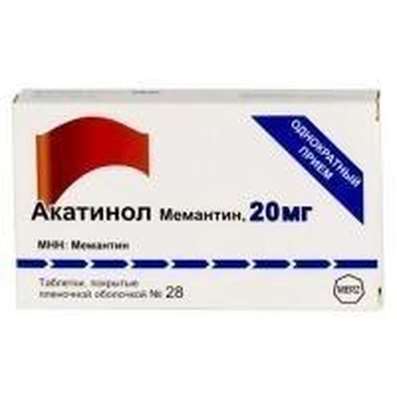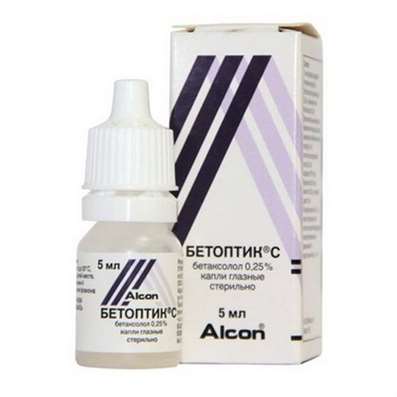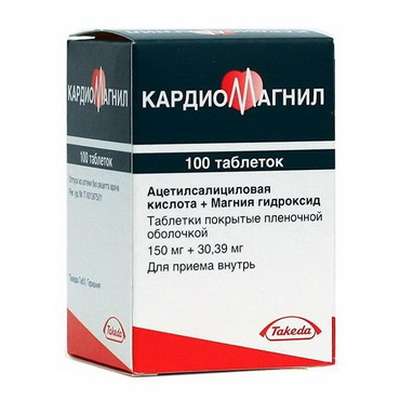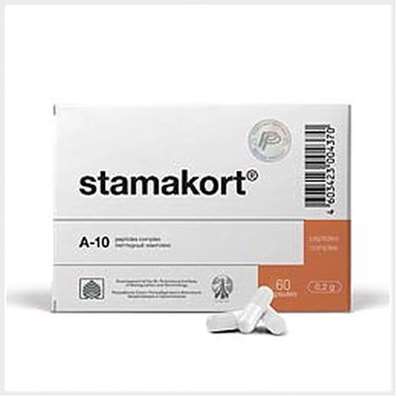Instruction for use: Mirellee
I want this, give me price
Active substance Gestodene + Ethinylestradiol
ATX code G03AA10 Gestodene + ethinylestradiol
Pharmacological group
Estrogens, gestagens; Their homologues and antagonists
Nosological classification (ICD-10)
Z30 Monitoring contraceptive use
Local Contraception, Contraception oral, Local contraception, Episodic prevention of pregnancy, Hormonal Contraception, Contraception, Prevention of Pregnancy, Prevention of unwanted pregnancy, Contraceptive intrauterine, Contraception in women with androgenization phenomena, Installation and removal of the intrauterine device, Prevention of pregnancy (contraception)
Z30.0 General advice and advice on contraception
Safe sex, Intrauterine device contraception, Contraception, Contraceptive intrauterine, Oral contraception, Oral contraception during lactation and with estrogen contraindications, Postcoital contraception, Prevention of Pregnancy, Prevention of unwanted pregnancy, Emergency Contraception, Episodic prevention of pregnancy, Contraception in adolescents, Prevention of pregnancy (contraception)
Composition and form of release
1 active tablet of light yellow color, coated, contains Gestogen 60 μg and ethinyl estradiol 15 μg.
Excipients: lactose monohydrate, MCC (microcrystalline cellulose), magnesium stearate, potassium polacrilin, dye yellow Y-1-6386-G, polyethylene glycol 1450, wax E (montane-glycol).
1 tablet-placebo white, coated, contains lactose monohydrate, MCC, magnesium stearate, potassium polacrilin, dye white Y-1-18024-A, polyethylene glycol 1450, wax E (montane-glycol).
In the blister pack, 28 tablets, in a box of 1 or 3 packs.
Characteristic
The active tablet is coated with a light yellow color, has a round shape and biconvex surfaces.
The placebo tablet is covered with a white or almost white shell, has a round shape and biconvex surfaces.
pharmachologic effect
Pharmacological action - contraceptive.
Pharmacodynamics
Mirelle - a low-dose monophasic oral combined estrogen-gestagen contraceptive drug.
The contraceptive effect of Mirelle is realized through three complementary mechanisms:
- Suppression of ovulation at the level of hypothalamic-pituitary regulation;
- changes in the properties of the cervical secret, as a result of which it becomes impenetrable for spermatozoa;
- changes in the endometrium, which makes it impossible to implant a fertilized egg.
In women taking combined oral contraceptives, the menstrual cycle becomes more regular, less painful menstruation is observed less often, the intensity of bleeding decreases, and the risk of iron deficiency anemia is reduced.
Pharmacokinetics
Gestoden. Absorption. After a single oral intake, it is quickly and completely absorbed, its Cmax in serum, equal to 2-4 ng / ml, is achieved after 1 hour. Bioavailability is about 99%.
Distribution. Gestodene is bound by serum albumin and globulin binding sex steroids (GSPC). In the free form is 1-2% of the total concentration in the serum, while 50-70% are specifically associated with the GSPN. As a result of induction of the synthesis of binding protein by ethinylestradiol, the fraction associated with the GHS is increased, while the albumin bound fraction is reduced. The apparent volume of distribution is 0.7 l / kg.
Metabolism. Gestodenum is completely metabolized. The rate of metabolic Cl from the serum is approximately 0.8 ml / min / kg. With simultaneous use with ethinyl estradiol, no direct interaction was detected.
Excretion. The content of Gestodene in the serum undergoes a two-phase reduction. T1 / 2 in the terminal phase of distribution is about 15 hours. In unchanged form it is not excreted, but only in the form of metabolites: T1 / 2 about 24 hours with urine and bile in a ratio of about 6: 4.
Equilibrium concentration. The pharmacokinetics of Gestodene is affected by the level of GSPS in the blood serum. With simultaneous application with ethinyl estradiol, the serum GSPC is increased approximately 3-fold. With a daily intake of the drug, an increase in the concentration of Gestodene in the blood serum is approximately 3-4 times. The state of equilibrium concentration occurs in the 2 nd half of the reception cycle.
Ethinylestradiol. Absorption. After ingestion, ethinylestradiol is absorbed quickly and completely. Cmax in the blood serum, equal to about 30 pg / l, is achieved after 1-2 hours. During absorption and first passage through the liver, it is metabolized, resulting in an average bioavailability of about 45%, with significant individual differences in The limits of 20-65%.
Distribution. Ethinyl estradiol is almost completely (98%), although it binds non-specifically with albumin. It induces synthesis of GSPN. The apparent volume of distribution is 2.8-8.6 l / kg.
Metabolism. It is subjected to presystemic conjugation, both in the mucosa of the small intestine and in the liver. The main pathway of metabolism is aromatic hydroxylation. The rate of metabolic Cl from the blood plasma is 2.3-7 ml / min / kg.
Excretion. The concentration in the blood serum decreases, and the decrease is of a two-phase nature: the first phase is characterized by T1 / 2 for about 1 hour, the second - 10-20 hours. Unchanged from the body is not excreted. Metabolites are excreted by kidney and liver in a ratio of 4: 6, T1 / 2 - about 24 hours.
Indication
Contraception.
Contraindications
Mirelle should not be used in the presence of any of the conditions listed below. If any of these conditions develop for the first time against the background of the drug, the drug should be immediately withdrawn.
- Thrombosis (venous and arterial) and thromboembolism at present or in the anamnesis (including deep vein thrombosis, pulmonary embolism, myocardial infarction, cerebrovascular disorders).
- Conditions preceding thrombosis (including transient ischemic attacks, angina pectoris) are currently or in the anamnesis.
- Migraine with focal neurologic symptoms in anamnesis.
- Diabetes mellitus with vascular complications.
- Multiple or expressed risk factors for venous or arterial thrombosis, incl. Damage to the valvular apparatus of the heart, disturbance of the rhythm of the heart, disease of the vessels of the brain or coronary arteries of the heart; Uncontrolled arterial hypertension.
- Pancreatitis with severe hypertriglyceridemia at present or in the anamnesis.
- Liver failure and severe liver disease (until liver tests are normal).
- Liver tumors (benign or malignant) at present or in the anamnesis.
- Revealed hormone-dependent malignant diseases (including genitals or mammary glands) or suspicion of them.
- Vaginal bleeding of unknown origin.
- Pregnancy or suspicion of it.
- Lactation.
- Hypersensitivity to any of the components of Mirellee.
- Long-term immobilization, serious surgical intervention, surgical operations on the legs, extensive injuries. In the case of a planned operation, it is recommended to stop taking the drug at least 4 weeks before it and not to resume reception for 2 weeks after the end of immobilization.
pregnancy and lactation
It is not prescribed during pregnancy. If the pregnancy is detected during the reception of Mirelle, the drug is immediately canceled. However, extensive epidemiological studies have not revealed any increased risk of developmental defects in children born to women who received sex hormones before pregnancy or teratogenicity when sex hormones were mistaken for early pregnancy.
Taking combined oral contraceptives can reduce the amount of breast milk and change its composition, therefore, their use as a whole is not recommended for lactation. A small number of sex steroids and / or their metabolites can be excreted in milk, but there is no evidence of their negative effects on the health of the newborn.
Side effects
The following undesirable effects have been described in some women taking Mirelle: soreness and tension of the mammary glands, enlargement of the mammary glands, discharge from the mammary glands; Spotting spotting and breakthrough uterine bleeding; headache; migraine; Change in libido; Decrease / change in mood; Poor tolerance of contact lenses; nausea; Vomiting; stomach ache; Changes in vaginal secretion; skin rash; Erythema nodosum; Erythema multiforme; Fluid retention; Change in body weight; Allergic reactions.
Sometimes chloasma can develop, especially in women with a history of pregnancy chloasma.
As with other combined oral contraceptives, in rare cases, the development of thrombosis and thromboembolism.
Interaction
Drug interactions, as a result of which the Cl of sex hormones increases, can lead to breakthrough bleeding and / or a decrease in contraceptive reliability.
This has been established with respect to phenytoin, barbiturates, primidone, carbamazepine and rifampicin; There is also a suggestion for oxcarbazepine, topiramate, felbamate, ritonavir and griseofulvin, and preparations containing St. John's Wort. The mechanism of this interaction is based on a change in the functioning of liver enzymes.
During the administration of drugs that affect microsomal enzymes, and within 28 days after its withdrawal, the barrier method of contraception should also be used. If the drug is taken at the end of taking active tablets from the Mirelle package, the inactive tablets should be skipped and the next package started.
Contraceptive protection is reduced by taking antibiotics (such as ampicillins and tetracyclines) because According to some data, some antibiotics can reduce enterohepatic circulation of estrogens, thereby lowering the contraception of ethinylestradiol.
When taking these antibiotics and within 7 days after their withdrawal, the barrier method of contraception should be used additionally. If the drug is taken at the end of taking active tablets from the Mirellee package, the inactive tablets should be skipped and the next Mirellee package started.
Oral combined contraceptives can affect the metabolism of other drugs (including cyclosporine), which leads to a change in their concentration in plasma and tissues.
Dosing and Administration
Tablets should be taken orally in the order given on the package, every day at about the same time with a small amount of water. Take 1 tab. Per day continuously for 28 days. Receiving the next package begins after receiving the last tablet of the previous package. Bleeding cancellation usually begins on day 2-3 from taking inactive tablets and may not end before the start of taking a new package.
How to start reception Mirelle.
- In the absence of taking any hormonal contraceptives in the previous month.
Admission Mirelle starts on the 1st day of the menstrual cycle (ie, the 1st day of menstrual bleeding). It is allowed to start taking the menstrual cycle on the 2nd-5th day, but in this case it is recommended to additionally use the barrier method of contraception during the first 7 days of taking the tablets from the first package.
- When switching from other combined oral contraceptives.
It is preferable to start taking Mirelle the next day after taking the last active tablet from the previous package, but in no case no later than the next day after an ordinary 7-day suspension (for preparations containing 21 tablets) or after taking the last inactive tablet (for Preparations containing 28 tablets per package).
- When switching from contraceptives containing only gestagens (mini-pili, injection form, implant) or with or releasing progestogen, an intrauterine contraceptive (Mirena).
A woman can switch from a mini-drink to Mirelle any day (without interruption), an implant or an intrauterine contraceptive with gestagen - on the day of its removal, from the injection form - from the day that the next injection should have been made. In all cases, it is necessary to use an additional barrier method of contraception during the first 7 days of taking the tablets.
- After abortion in the first trimester of pregnancy. A woman can start taking it immediately. If this condition is met, the woman does not need additional contraceptive protection.
- After childbirth or abortion in the second trimester of pregnancy. A woman should be recommended to start taking the drug on the 21-28th day after childbirth or abortion in the second trimester of pregnancy. If the intake is started later, it is necessary to use an additional barrier method of contraception during the first 7 days of taking the tablets. However, if a woman already had sex life, pregnancy should be excluded before starting Mirelle, or it is necessary to wait for the first menstruation.
Acceptance of missed tablets. Missed inactive tablets may be ignored. There is no need to take missed inactive tablets, because This can inadvertently prolong the period of intake of inactive tablets. The following tips deal with skipping only active pills.
If the delay in taking the tablet is less than 12 hours, the contraceptive protection does not decrease. A woman should take the pill as soon as possible, the next should be taken at the usual time.
If the delay in taking the tablets is more than 12 hours, the contraceptive protection can be reduced. In this case, you can follow the following two basic rules:
- taking the drug should never be interrupted, for more than 4 days;
- 7 days of continuous intake of tablets are required to achieve adequate suppression of hypothalamic-pituitary-ovarian regulation.
Accordingly, the following tips can be given if the delay in taking the tablets is more than 12 hours (the interval from the time the last pill is taken is more than 36 hours):
- 1 week of taking the drug. A woman should take the last missed pill as soon as possible, as soon as she remembers (even if it means taking 2 tablets at the same time). The next tablet is taken at the usual time. In addition, the barrier method of contraception (for example, a condom) should be used for the next 7 days. If sexual intercourse took place within a week before passing the pill, it is necessary to consider the likelihood of pregnancy. The more pills are missed and the closer this pass to the period of taking inactive tablets, the higher the risk of pregnancy.
- 2 weeks of taking the drug. The woman should take the last missed pill as soon as possible, as soon as she remembers (even if this means taking 2 tablets at the same time). The next tablet is taken at the usual time.
Provided that the woman took the pill correctly for 7 days preceding the first missed pill, there is no need to use additional contraceptive measures. Otherwise, as well as by skipping 2 or more tablets, barrier methods of contraception (for example, a condom) should be used additionally within 7 days.
- 3 week of taking the drug. The risk of a decrease in reliability is inevitable due to the forthcoming period of taking inactive tablets.
A woman should strictly adhere to one of the following two options. In this case, if in 7 days preceding the first missed tablet, all the pills were taken correctly, there is no need to use additional contraceptive methods.
1. A woman should take the missed pill as soon as possible, as soon as she remembers (even if this means taking 2 tablets simultaneously). The next tablet is taken at the usual time, until the active tablets run out. 4 inactive tablets do not take. The next package should be started immediately. Bleeding cancellation is unlikely until the active tablets from the second package run out, but there may be spotting or breakthrough bleeding during the taking of tablets.
2. A woman can also interrupt the taking of tablets from the current package. Then she should take a break for 4 days, including the day of the missing tablet, and start accepting a new package.
If a woman misses taking pills, and then during the intake of inactive pills she does not have a withdrawal bleeding, it is necessary to exclude pregnancy.
Recommendations in case of vomiting and diarrhea. If a woman has vomiting or diarrhea within up to 4 hours after taking active pills, suction may not be complete and additional contraceptive measures should be taken. In these cases, recommendations should be followed when skipping tablets.
Change the day of the beginning of the menstrual cycle. In order to delay the onset of menstruation, a woman should continue taking the new Mirelle package without taking inactive tablets from the previous package. Tablets from this new package can be taken for as long as the woman wishes (as long as the active tablets from this package run out). Against the background of taking the drug from the second package, a woman may have spotting spotting or breakthrough uterine bleeding. Regular intake of Mirelle resumes after a period of taking inactive tablets.
In order to transfer the day of the onset of menstruation on the next day of the week, the woman should shorten her immediate period of taking inactive tablets for the required number of days. The shorter the interval, the higher the risk that it will not have withdrawal bleeding and thereafter will be spotting and breakthrough bleeding during the second package (as well as in the case when it would like to delay the onset of menstruation).
Overdose
No serious side effects were reported with an overdose. Symptoms that can be noted in overdose of active tablets: nausea, vomiting, spotting spotting or metrorrhagia.
There is no specific antidote; Should be symptomatic treatment.
Precautionary measures
With special care, Mirelle is prescribed for:
- pronounced violations of fat metabolism (obesity, hyperlipidemia);
- epilepsy;
Otosclerosis with hearing impairment, idiopathic jaundice or itching during an earlier pregnancy;
- congenital hyperbilirubinemia (syndromes Gilbert, Dubin-Johnson and Rotor);
- Migraines with aura;
- Diabetes mellitus;
- systemic lupus erythematosus;
- hemolytic uremic syndrome;
- Crohn's disease;
Sickle cell anemia;
- arterial hypertension.
If any of the conditions / risk factors listed below are currently available, the potential risk and expected benefits of treatment in each individual case should be carefully weighed and discussed with the woman before she decides to start taking the drug. In case of weighting, strengthening or the first manifestation of any of these conditions or risk factors, a woman should consult with her doctor who can decide whether to cancel the drug.
- Diseases of the cardiovascular system.
A number of epidemiological studies have revealed a slight increase in the incidence of venous and arterial thrombosis and thromboembolism with combined oral contraceptives.
Approximate incidence of venous thromboembolism (deep vein thrombosis or pulmonary embolism) in women taking oral contraceptives, estrogen with low dose (less than 50 mcg ethinyl estradiol) is about 4 to 10,000 women per year compared to 0.5-3 per 10,000 per year In women who do not use oral contraceptives. However, the frequency of venous thromboembolism (VTE) developing with combined oral contraceptives is less than the frequency associated with pregnancy (6 per 10,000 pregnant women per year).
In women receiving combined oral contraceptives are disclosed extremely rare cases, thrombosis other blood vessels, for example, hepatic, mesenteric, renal arteries and veins, central retinal vein and its branches. The connection with the use of combined oral contraceptives has not been proven.
A woman should stop taking the drug and consult a doctor when developing symptoms of venous or arterial thrombosis or cerebrovascular disorders, which may include: unilateral leg pain and / or swelling; Sudden severe pain in the chest with irradiation or without in the left arm; Sudden shortness of breath; Sudden attack of cough; Any unusual, strong, prolonged headache; Sudden partial or complete loss of vision; Diplomacy; Slurred speech or aphasia; dizziness; Loss of consciousness with or without convulsive seizure; Weakness or very significant loss of sensitivity, suddenly appeared on one side or in one part of the body; Motor disorders; Symptoms of an acute abdomen.
The risk of developing thrombosis (venous and / or arterial) and thromboembolism increases:
- with age;
- for smokers (with an increase in the number of cigarettes or an increase in the age, the risk rises, especially in women over 35);
in the presence of:
- family history (ie venous or arterial thromboembolism of ever close relatives or parents at a relatively young age); In the event that hereditary predisposition is assumed, the woman should be examined by the appropriate specialist to decide on the possibility of taking combined oral contraceptives;
- with obesity (body mass index more than 30 kg / m2);
- dyslipoproteinemia;
- arterial hypertension;
- migraine;
- heart valve diseases;
- Atrial fibrillation;
- prolonged immobilization, serious surgical interventions, any foot surgery or extensive trauma. In these cases, it is desirable to stop using combined oral contraceptives (in the case of a planned operation, at least 4 weeks before it) and not to resume reception for 2 weeks after the end of immobilization.
An increased risk of thromboembolism in the postpartum period should be considered.
Circulatory disorders as may occur in diabetes mellitus, systemic lupus erythematosus, hemolytic uremic syndrome, chronic inflammatory bowel diseases (Crohn's disease or ulcerative colitis) and sickle cell anemia.
An increase in the frequency and severity of migraine during the use of combined oral contraceptives (which may precede cerebrovascular disorders) may be the reason for the immediate discontinuation of these medications.
Biochemical parameters which can be indicative of hereditary or acquired predisposition to venous or arterial thrombosis include resistance to activated protein C, hyperhomocysteinemia, deficiency of antithrombin-III, deficiency of protein C, protein deficit S, antiphospholipid antibodies (antibodies to cardiolipin, lupus anticoagulant).
It should be borne in mind that the risk of thrombosis during pregnancy is higher than when taking combined oral contraceptives.
Although combined oral contraceptives may influence insulin resistance and glucose tolerance, there is no need to change the therapeutic regimen in diabetics using low-dose combined oral contraceptives (<0.05 mg ethinylestradiol). Nevertheless, women with diabetes should be carefully monitored while taking combined oral contraceptives.
Women with a tendency to chloasma during the intake of combined oral contraceptives should avoid prolonged exposure to sunlight and exposure to UV radiation.
Laboratory tests. Receiving COCs can affect the results of some laboratory tests including liver function tests, renal, thyroid, adrenal gland, the level of transport proteins in plasma, carbohydrate metabolism, coagulation parameters and fibrinolysis. Changes usually do not go beyond the limits of normal values.
Against the background of combined oral contraceptives, there may be irregular bleeding (spotting spotting or breakthrough bleeding), especially during the first months of use. Therefore, any irregular bleeding should be assessed only after an adaptation period of approximately 3 cycles.
If irregular bleeding recurs or develops after previous irregular cycles, a thorough examination should be performed to exclude malignant neoplasms or pregnancy.
In some women, bleeding cancellations may not develop while taking inactive tablets. If combined oral contraceptives are taken as directed, it is unlikely that a woman is pregnant. However, if previously combined oral contraceptives were taken irregularly or there were no consecutive bleeding cancellations, pregnancy should be excluded before continuing with the drug.
Medical examinations. Before the application of Mirelle, a woman is recommended to undergo a thorough general medical and gynecological examination (including breast examination and cytological examination of cervical mucus), to exclude pregnancy. In addition, violations of the blood coagulation system should be avoided.
In the case of long-term use of the drug, it is necessary to conduct control examinations every 6 months.
A woman should be warned that preparations of the Mirelle type do not protect against HIV infection (AIDS (acquired immunodeficiency syndrome)) and other sexually transmitted diseases.
Influence on ability to drive the car and technology is not revealed.
storage Conditions
At a temperature not exceeding 30 ° C.
Keep out of the reach of children.
Shelf life
3 years.
Do not use after the expiry date printed on the package.

 Cart
Cart





